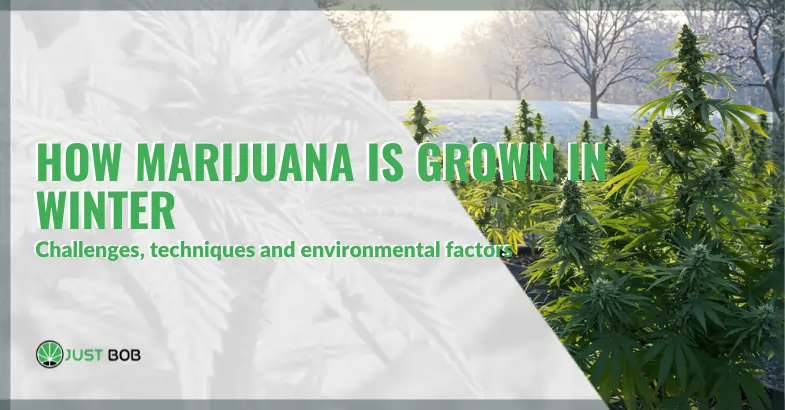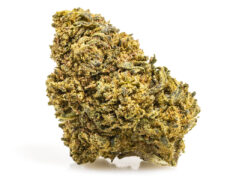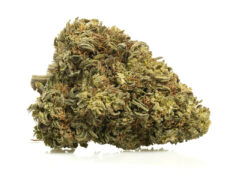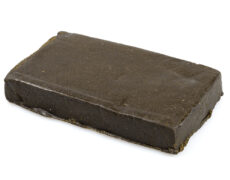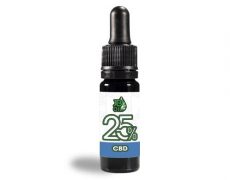Modified on: 19/09/2025
Even in the coldest months, advanced techniques, genetic selection and indoor technologies allow cannabis to grow successfully
Winter, with its muffled silence, shortening days and pale, distant sun, evokes images of rest and dormancy for the plant world. It seems the least suitable season for growing a plant such as cannabis, whether marijuana in the strict sense or CBD cannabis, which in the collective imagination is inextricably linked to summer heat and abundant light.
The idea of starting cultivation during the colder months may therefore seem counterintuitive, a real challenge against nature.
However, for the most experienced growers and enthusiasts operating within the regulatory frameworks that allow it, which are still few and far between despite the gradual legalisation of the plant, winter does not mark a forced break, but rather the beginning of a fascinating project that tests skill, ingenuity and botanical knowledge.
It is a reversal of the natural cycle, an act of will in which the environment no longer dictates the rules but is meticulously shaped to serve the needs of the plant. This practice, born out of the need to overcome climatic limitations, has evolved into a sophisticated discipline, a constant dialogue between technology and biology.
This article by Justbob aims to explore this complex world, purely for informational purposes. Given the illegality of cannabis cultivation in most countries around the world, the following information is for educational, cultural and theoretical purposes only, referring to practices and methodologies adopted exclusively where the law has legalised and regulated this activity.
Our aim is to provide a detailed overview of a topic of botanical and technical interest.
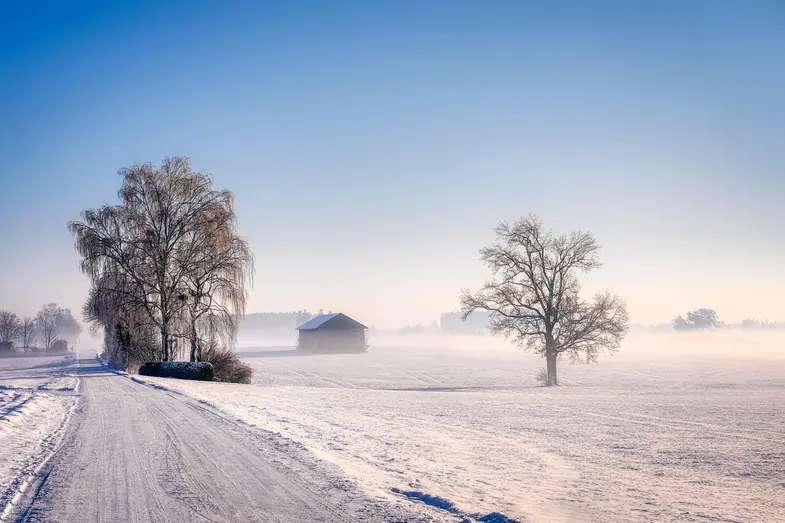

Choosing genetics: not all plants like the cold
The success of winter cultivation begins long before planting a seed: it starts with meticulous genetic selection.
Not all cannabis varieties have the necessary temperament to cope with stressful conditions such as cold and lack of light. Sativa genetics, for example, which evolved in hot equatorial regions, have long flowering cycles and an insatiable appetite for light and heat, making them almost impossible to manage in a winter environment.
The most logical and strategic choice therefore falls on more robust and faster genetics.
Indica-dominant strains, descended from strains grown in the mountain ranges of Central Asia, such as Hindu Kush, have a natural resistance to cold and shorter flowering cycles. This speed is no coincidence, but an evolutionary adaptation to short summers and early autumns. Their morphology, with a lower, more compact structure and dense buds, also helps to conserve heat.
Even more suitable are autoflowering varieties. These plants, which owe their existence to the Ruderalis subspecies, native to the hostile Siberian wastelands, have a unique characteristic: they flower according to their age, not in response to a change in photoperiod.
This evolutionary advantage makes them perfect for winter, as their biological clock is not confused by the few hours of light.
There are also so-called “Fast Version” varieties, ultra-fast flowering photoperiodic hybrids that combine the speed of autoflowering with the productivity of photoperiodic varieties.
It is important to note that even the most resistant varieties can suffer from the effects of cold, which can affect the terpene profile (the plant’s aromatic oils) and cannabinoid production. Mild thermal stress can sometimes stimulate resin production as a defence mechanism, but excessive cold will inevitably lead to a lower quality harvest.
It is precisely this resin – rich in terpenes and non-psychoactive cannabinoids in certified varieties – that in some legal contexts is harvested and processed to obtain preparations such as CBD hashish, made from selected inflorescences and processed using techniques that enhance the plant’s natural secretions.
Read also: Outdoor Grown Cannabis, Indoor and Greenhouse Cannabis: all the Differences in This Regard?
Temperature control: recreating an artificial summer
The most obvious challenge of winter cultivation is cold management. Cannabis plants are complex organisms whose metabolism is closely linked to the ambient temperature. Excessive and prolonged cold can induce radical thermal shock, paralysing the roots’ ability to absorb water and nutrients.
This leads to stunted growth and obvious nutritional deficiencies, particularly phosphorus and magnesium, whose absorption is greatly inhibited by low temperatures.
For indoor growers, the goal is to create a stable microclimate, maintaining the temperature between 22 and 26°C during daylight hours. It is even more critical to prevent the temperature from falling below 18°C during the dark phase. A large temperature difference between day and night is a source of great stress for the plant.
To do this, heating mats are often used, which act directly on the root zone, the real engine of the plant, or small ceramic fan heaters connected to a thermostat for precise control. In more advanced hydroponic systems, aquarium heaters can even be used to maintain the nutrient solution at the ideal temperature.
Excellent thermal insulation of the room or grow tent is also essential. The signs of cold stress are unmistakable: in addition to the classic purple discolouration of the stems, you will notice slower growth and a slight curling of the leaves towards the bottom.
It is crucial to distinguish the normal purple discolouration of some genetics (caused by anthocyanins, natural pigments) from the purple colour induced by the cold, which is a clear symptom of metabolic distress.
Indoor lighting: sunshine when there is no sun
Winter is synonymous with a lack of light. The days get shorter and the intensity of the sun’s rays decreases dramatically, making successful outdoor cultivation almost impossible. Indoors, however, this limitation is completely eliminated thanks to technology. Grow lights become the beating heart of the entire system.
There are various options. HPS (High Pressure Sodium) lamps emit a very intense orange light and heat, a secondary advantage in winter. However, MH (Metal Halide) lamps, with a bluer light, were preferred for the vegetative phase.
Today, this dual-bulb system has been largely superseded by full-spectrum LED lamps. Although these devices have a higher initial cost, they offer superior energy efficiency, a longer service life and, above all, the ability to modulate the light spectrum.
For a scientific approach, experienced growers no longer talk about Watts, but about PAR (Photosynthetically Active Radiation) and PPFD (Photosynthetic Photon Flux Density), which measures the amount of useful light that actually reaches the plants. The goal is to provide an optimal DLI (Daily Light Integral), which is the total amount of photons the plant receives in 24 hours. This allows you to precisely adjust the intensity and distance of the lamps, avoiding both “stretching” due to lack of light and “light burn” due to excess light.
Photoperiod management remains crucial: 18 hours of light for growth and 12 for flowering.
The silent threat: humidity and mould
A closed, heated growing environment surrounded by the cold outside is a perfect recipe for condensation and humidity. This parameter is perhaps the most insidious enemy of winter cultivation.
Excessive relative humidity (RH), especially during flowering, creates ideal conditions for the proliferation of pathogenic fungi and mould. The most feared is botrytis (Botrytis cinerea), or grey mould, which rots the buds from the inside.
Equally dangerous is powdery mildew. More advanced growers manage this parameter through the concept of Vapour Pressure Deficit (VPD). VPD is the difference between the vapour pressure in the air and the vapour pressure inside the leaf; it regulates the plant’s transpiration.
Maintaining the correct VPD for each growth stage (lower in vegetative, higher in flowering) optimises the plant’s health and metabolism.
To control humidity, it is essential to ensure powerful air exchange with an extractor and good internal ventilation. The use of a dehumidifier is often non-negotiable.
A fundamental cultivation practice is pruning: applying techniques such as strategic defoliation and “lollipopping” drastically improves airflow, eliminating pockets of humid air. The use of silicon-based supplements can also help, strengthening cell walls and creating a physical barrier against fungal attacks. Prevention, in this case, is truly the only cure.
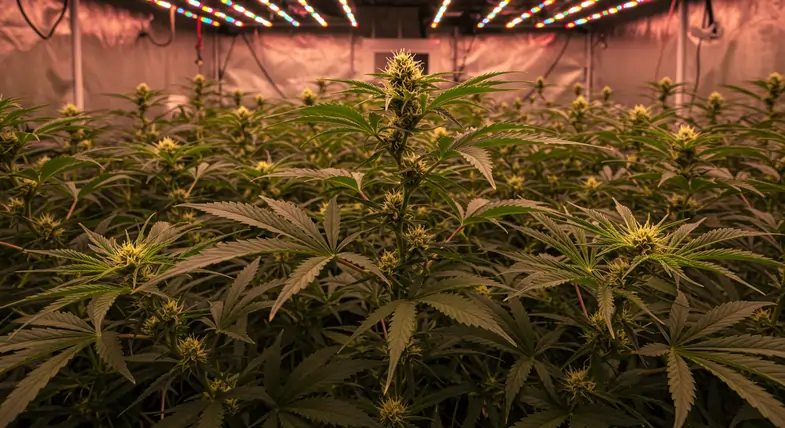

Greenhouse cultivation: a smart compromise
For those who have outdoor space and operate legally, a greenhouse offers an excellent compromise. It allows you to take advantage of natural sunlight while protecting your plants from the elements.
The choice of covering material is crucial: double-walled polycarbonate offers thermal insulation (R-value) far superior to single-pane glass or simple polyethylene sheeting. The orientation of the greenhouse is equally strategic: positioning it with the long side facing south maximises exposure to the weak winter sun. A lean-to or greenhouse built against a wall of the house can benefit from the heat dispersed from the dwelling.
However, the structure alone is not enough. It is necessary to implement hybrid solutions: a small heating system and the installation of additional lamps to ensure that the plants receive their optimal DLI.
Passive heating techniques, such as the use of thermal masses (water barrels or stone walls), can help stabilise the temperature by absorbing heat during the day and releasing it at night. Sealing any cracks and insulating the greenhouse foundations is crucial to prevent unnecessary heat loss. It is essential to ensure that the structure is robust enough to withstand heavy snowfall, which is a real risk in many regions during the winter.
From hobby to passion for collecting: light cannabis
As described, cultivation is an extremely complex activity that requires skills, resources and a legal framework that allows it, which is far from common.
However, for all enthusiasts fascinated by the incredible aromatic varieties and aesthetic characteristics of hemp, there is a legal and safe alternative: the world of collectible light cannabis.
High-end products, such as CBD buds, allow you to appreciate the best hemp genetics, grown by professionals in full compliance with the law. Collecting these inflorescences shifts the focus to “bag appeal”: the density and maturity of the trichomes (the resin glands), the compactness and structure of the flower, the quality of the trimming and the colour nuances are all evaluated.
The most fascinating aspect is the analysis of the terpene profile, which defines the complex aroma of the plant. It is a sensory experience similar to that of a sommelier with wine.
It is essential to reiterate that these CBD products are legally sold for specific purposes such as technical use, research, collecting or room fragrancing, and are not intended for consumption. This distinction is crucial and allows enthusiasts to explore this plant world in complete safety and legality, appreciating the work of expert growers who are able to express the aesthetic potential of each individual strain to the fullest.
Read also: Indoor marijuana: what are the main characteristics?
An art that requires science and dedication
Cultivating cannabis in winter transcends simple gardening to become an authentic discipline that blends botanical art and applied science. It is an endeavour that requires impeccable planning, investment in technology and an almost obsessive dedication to constantly monitoring and calibrating the vital parameters of the growing environment.
It is an endeavour that is being increasingly refined by large global companies that cultivate all varieties of the plant, including light varieties from which increasingly popular products such as CBD oil are extracted.
Victory over the cold, lack of light and excess humidity can only be achieved through total environmental control, which transforms a sealed space into a summer utopia. It is a holistic system in which every variable is interconnected: an error in temperature management can compromise the effectiveness of lighting and promote the onset of mould.
The choice of suitable genetics, scientific light and temperature management, and a proactive prevention strategy against fungal diseases are the cornerstones of a successful winter harvest.
It remains imperative for anyone interested in this topic to act with the utmost responsibility and awareness, informing themselves thoroughly and always operating in full compliance with the laws of their country. The complexity of this challenge only increases our admiration for the resilience of this plant, whose vitality, supported by human ingenuity, manages to triumph even over the most hostile season.
Marijuana in winter: takeaways
- Not all cannabis strains are suitable for cold weather. Indica-dominant strains and especially autoflowering strains (descendants of Ruderalis) are best suited to low temperatures and reduced light cycles. These genetics, selected for their resistance and speed, allow cultivation to begin even in the least favourable months, reducing the risk of environmental stress and optimising results, although the cold can still affect aroma and yield.
- Growing cannabis in winter requires the creation of a completely artificial microclimate: stable temperature (22–26°C during the day, never below 18°C at night), regulated humidity and controlled photoperiod. Technologies such as heaters, heating mats, full-spectrum LED lamps and dehumidifiers become essential tools for ensuring optimal conditions. Monitoring parameters such as VPD (Vapor Pressure Deficit) is now an integral part of the most advanced practices.
- For those who have outdoor space and live in an area where growing this plant is legal, a greenhouse is a balanced solution: it takes advantage of sunlight while protecting from the elements. With insulating materials (such as polycarbonate), hybrid heating and supplementary lighting systems, and the integration of passive techniques such as thermal masses, the winter greenhouse can become a productive and sustainable environment, provided it is well designed, insulated and able to cope with the rigours of the season.
Marijuana in winter: FAQ
What are the best cannabis strains for winter cultivation?
The most suitable varieties for winter cultivation are Indica-dominant and autoflowering strains. Indica strains, such as those from the Hindu Kush, are more resistant to cold and flower more quickly. Autoflowering strains, derived from Ruderalis, flower based on age rather than photoperiod, making them ideal for low-light conditions. Fast Version strains are also a good choice, thanks to their accelerated flowering.
How can you control the temperature during indoor winter cultivation?
To maintain the optimal temperature between 22-26°C during the day and never below 18°C at night, you can use heating mats, ceramic fan heaters connected to a thermostat or aquarium heaters in hydroponic systems. Good thermal insulation of the growing space is also important to avoid thermal shock and metabolic stress.
What are the risks associated with humidity in winter cannabis cultivation?
High humidity promotes moulds such as botrytis and powdery mildew. It is essential to maintain good air exchange with extractors, fans and, if necessary, dehumidifiers. Techniques such as strategic defoliation or “lollipopping” help improve air circulation. Monitoring the VPD (Vapour Pressure Deficit) is essential to ensure proper transpiration of the plant.

